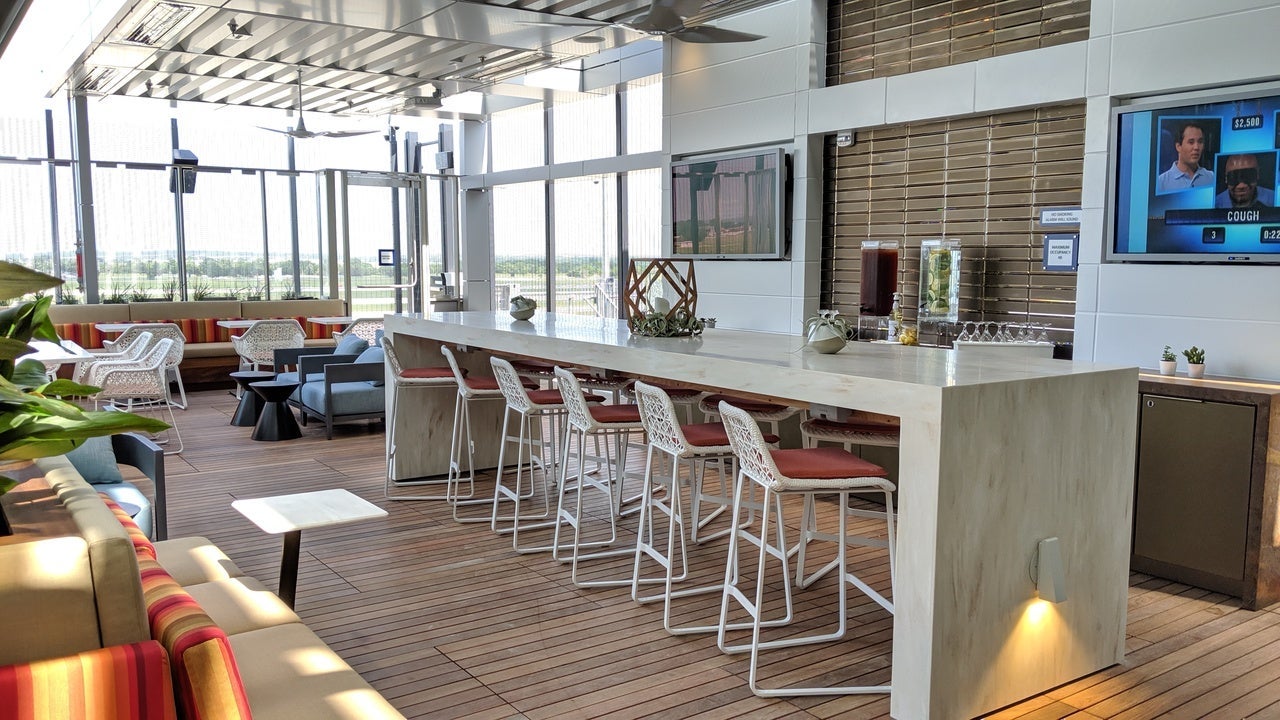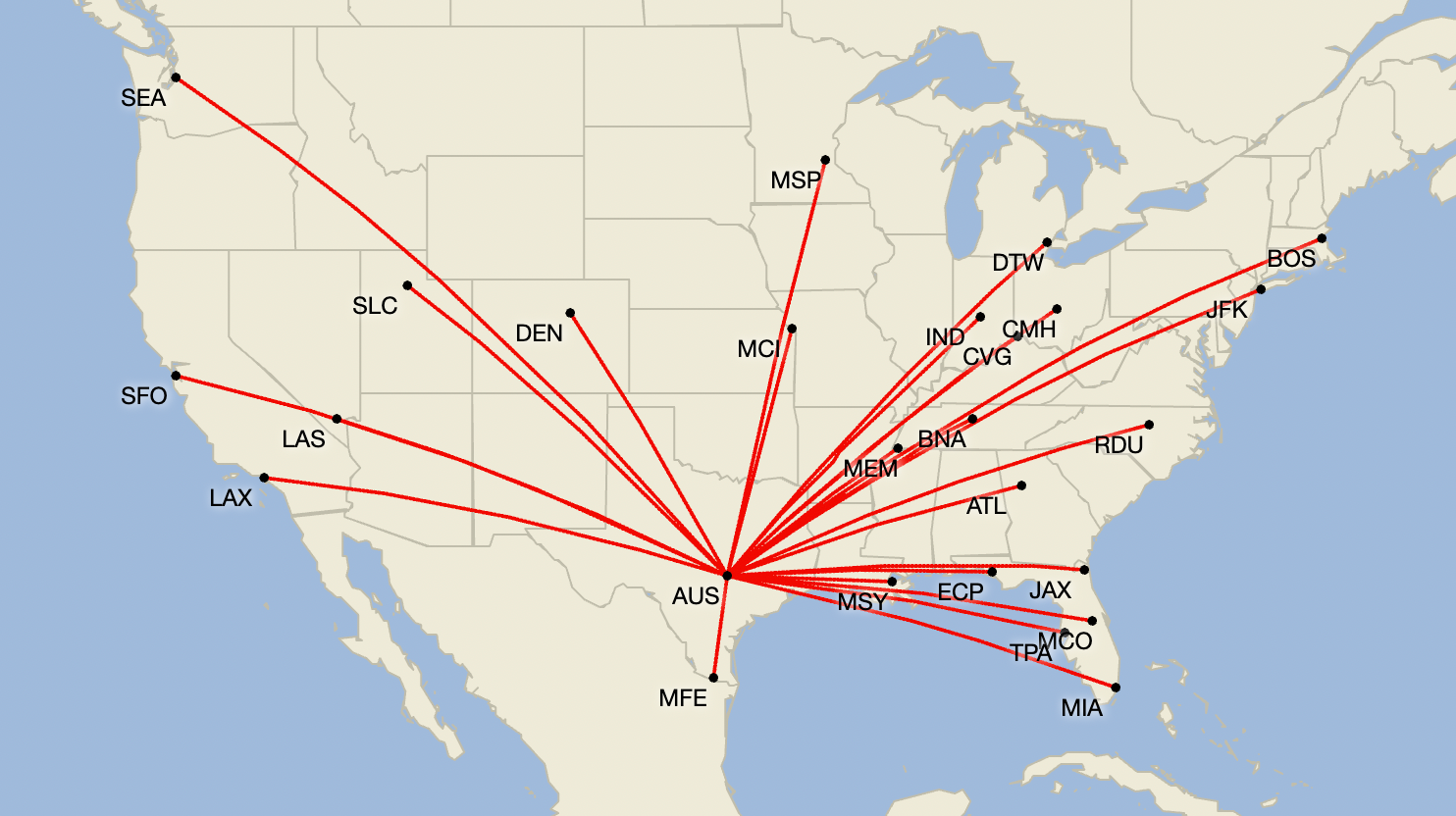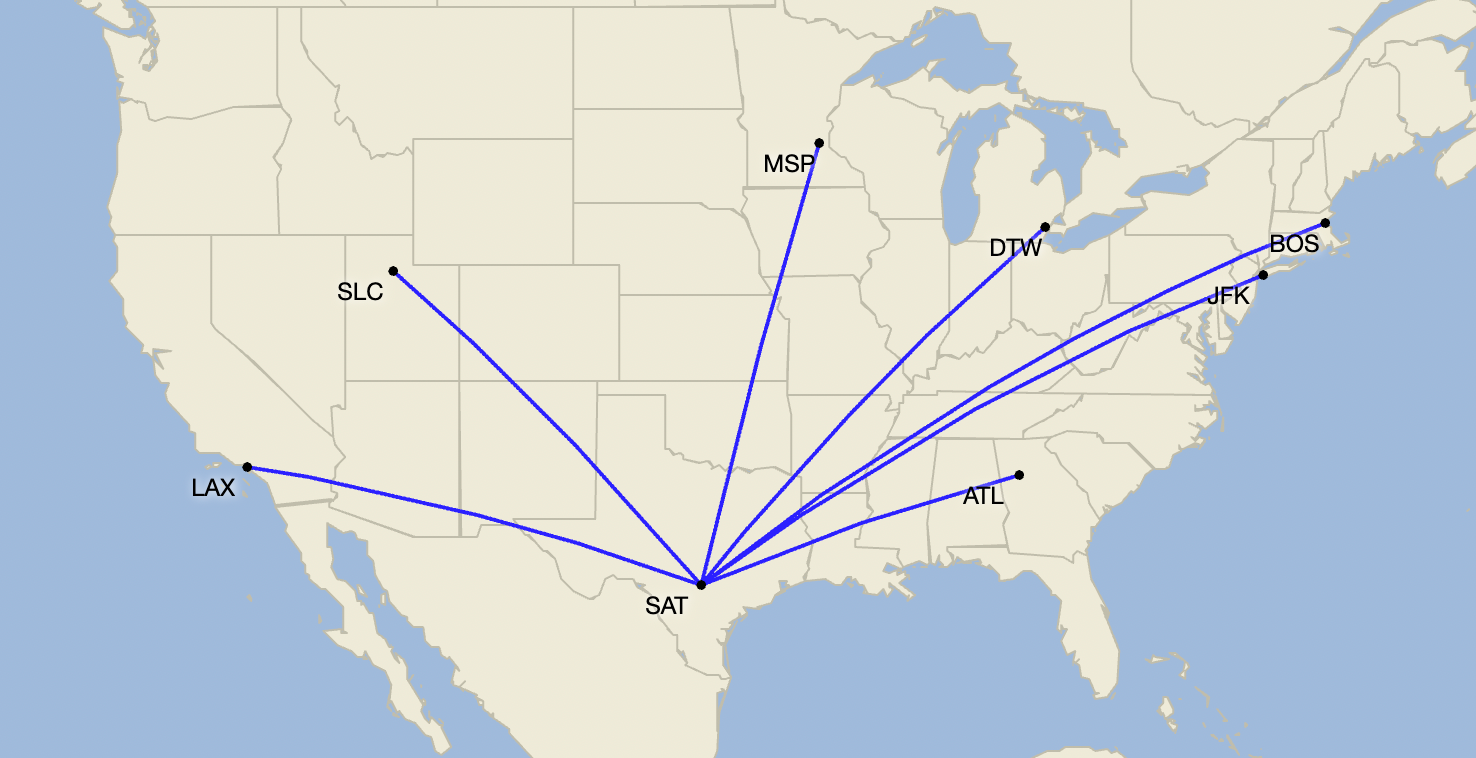Why does Delta Air Lines have ‘focus cities’? Loyalty
Delta Air Lines has a unique route strategy that sets it apart from its peers.
The Atlanta-based carrier has three "focus cities" at airports across the country: Austin-Bergstrom International Airport (AUS), Cincinnati/Northern Kentucky International Airport (CVG) and Raleigh-Durham International Airport (RDU). On the surface, these are simply airports where Delta is smaller than at a hub but larger than at other normal destinations — known as "spokes" — in terms of both number of flights and routes.
A typical destination on Delta's map would have flights only to its hubs, like Hartsfield-Jackson Atlanta International Airport (ATL), Detroit Metropolitan Wayne County Airport (DTW) and Salt Lake City International Airport (SLC), and maybe to its focus cities.
Then there is the "je ne sais quoi" of Delta's strategy that is some alchemy of added sales and marketing investment that makes a focus city unique.
Neither American Airlines nor United Airlines has official focus cities. However, a few nonhubs on their maps could be considered such on flight numbers alone. Boston Logan International Airport (BOS) and RDU for American, and Cleveland Hopkins International Airport (CLE) for United, for example.
But, for Delta, a focus city becomes a candidate for many more routes than a traditional "spoke city," which tends to have flights only to a carrier's hubs. Compare, for example, the maps below showing the number of routes Delta offers from its Austin focus city compared to San Antonio, which is not a focus city.
Focus cities boost loyalty
Why does Delta have focus cities and its competitors do not? Relevance among loyal frequent flyers.
"What makes customers choose Delta over a different carrier?" said Glen Hauenstein, president of Delta, during the airline's third-quarter earnings call Thursday. "I think the answer is relevance. If we're not relevant, we cannot acquire the SkyMiles [members], we cannot acquire the credit cards — the ecosystem — you have to have relevance. That's why it's important for us to have focus cities."
Hauenstein pointed to AUS as an example.

"Austin we've chosen because we don't have a Texas hub," he said. "Texas is in and of itself a huge revenue market. So, seeing those opportunities, looking at the demographics, looking at the GDP ... and saying where do we need to have a relevant offer so people will join our SkyMiles program, they will get our credit cards, and we can produce the relevance."

American operates its largest hub at Dallas Fort Worth International Airport (DFW), while United has one of its largest at Houston's George Bush Intercontinental Airport (IAH). And Southwest Airlines, while not officially a hub-and-spoke carrier, counts Dallas Love Field (DAL) and Houston's William P. Hobby Airport (HOU) among its largest bases.
Today, loyalty is a huge money maker for Delta. In the three months ending in September, the airline reported nearly $2 billion in loyalty revenue, or 12% of its total revenue during the period.
No wonder Delta is expanding in markets that it sees as advantageous to growing SkyMiles and wooing more travelers to its cobranded American Express credit cards.
New focus city routes are about more than just demand
But new routes Delta adds from AUS — or any of its focus cities — are not determined solely on travel demand, Hauenstein revealed.
Rather, the airline conducts a complex analysis of how to "maximize" the "interaction between the airline and the card ... as opposed to just looking at an individual route," he said.
That could mean, for example, adding a flight that does not make sense on travel demand alone, but might still be justified because it's a destination that a large number of local loyalty members travel to.
This year, Delta will fly a quarter more flights and about a fifth more seats from AUS than it did in 2024, schedule data from aviation analytics firm Cirium shows. That growth includes new routes to places like Denver International Airport (DEN), Indianapolis International Airport (IND) and Louis Armstrong New Orleans International Airport (MSY).
The airline has even added some less obvious routes, including McAllen International Airport (MFE) in southern Texas and Northwest Florida Beaches International Airport (ECP) near Panama City Beach on Florida's panhandle, from AUS.
Delta's other focus cities, CVG and RDU, are slower burns. Seats are up 3% and 4% respectively at the airports this year compared to 2024, Cirium schedules show. And both are still smaller than they were in 2019 before the COVID-19 pandemic.
Does Delta plan on adding more focus cities?
Hauenstein did not mention any plans for another focus city at Delta despite emphasizing their benefits.
Prior to the pandemic, the airline considered both Nashville International Airport (BNA) and San Jose Mineta International Airport (SJC) in California to be focus cities. They are now back to traditional "spokes" with SJC losing its only nonhub route to Las Vegas' Harry Reid International Airport (LAS) in January.
And the future for Delta's current focus cities? Hauenstein also provided no outlook except that they are "quite profitable" and here to stay.
But any airport wishing to be more than a focus city only needs to look as far as BOS, which was upgraded to hub status in 2019, to see the possibility.
Related reading:



